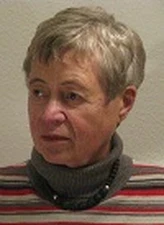Karin Labitzke

The 2011 Vilhelm Bjerknes Medal is awarded to Karin Labitzke in recognition of her fundamental achievements in the observational study of the stratosphere and mesosphere. She has made many important contributions to increasing our understanding of these regions of the atmosphere and has led the way in discovering the influence of the 11-year solar cycle on the Northern Hemisphere stratospheric polar vortex as modulated by the Quasi-Biennial Oscillation.
Karin Labitzke is a highly distinguished observational meteorologist and a leading figure in the study of the stratosphere and mesosphere. She has a long record of significant research contributions in this area, represented by over a hundred highly-cited publications stretching from 1966 to 2009. She has been involved in studies of almost all important aspects of stratospheric and mesospheric meteorology. In her early work she concentrated on elucidating the nature of stratospheric sudden warmings, making crucial contributions to our understanding of these events. Under her leadership, a historic stratospheric data set with daily weather maps became available, which were of enormous benefit to all who worked in this field. She revealed the impact of El Niño/Southern Oscillation and volcanic eruptions on the stratospheric polar vortex based on firm observational data. Later, she concentrated on studying the influence of solar variations on the stratospheric circulation. In 1987 she reported findings that the effect of solar UV variations (amounting to 6-8% over the 11-year solar cycle) on the Northern Hemisphere winter stratospheric polar vortex and mean meridional circulation is significant and that its nature depends on the phase of the Quasi-Biennial Oscillation (QBO). This discovery has been confirmed by her recent work using a much-extended data set, now stretching over six solar cycles, and the influence of the solar cycle has been shown to extend to all seasons and the entire globe. Labitzke has also made significant contributions to research on ozone variations in the stratosphere, on the structure of planetary waves and their possible interactions with the troposphere, and on the effects of anthropogenic CO2 increase on the stratospheric temperature and wind fields. She has had strong and productive interactions with modellers of the stratospheric circulation, resulting in joint publications. Karin Labitzke’s 1999 book with H. Van Loon, The Stratosphere: Phenomena, History, and Relevance, has brought to a general audience the excitement of stratospheric meteorology, describing the various unexpected phenomena that occur in this region of the atmosphere and stressing the importance of the stratosphere as a component of the climate system.
